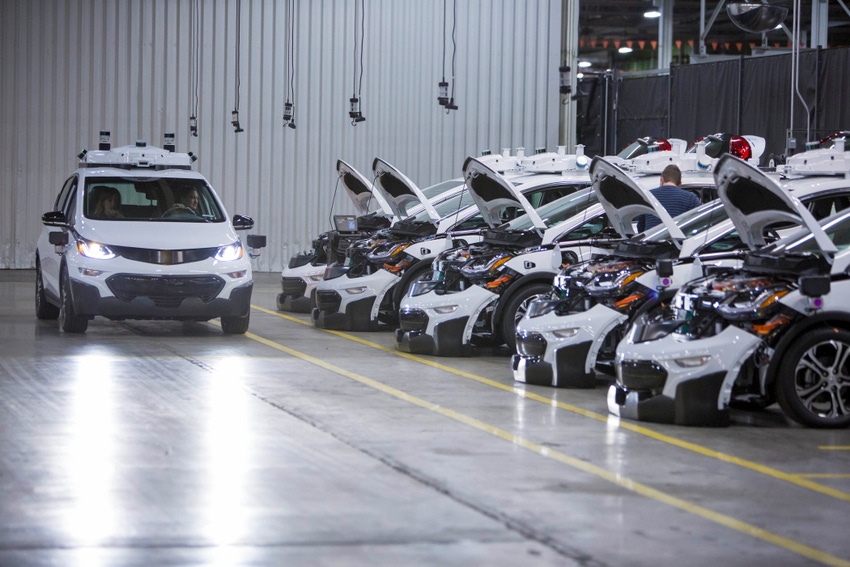GM builds 130 autonomous Chevy Bolts on mass production line near Detroit.
June 20, 2017

The autonomous vehicle took a small step toward viability last week as General Motors announced that it used mass production techniques to finish a batch of 130 Chevy Bolt EVs containing self-driving technology.
The mass production technique involved the addition of cameras, Lidar and other sensors in an automated assembly plant in Orion Township, MI. It may or may not be a first for an autonomous car, but either way, industry observers expect the batch of Bolts to be followed by many more such efforts, from GM and its competitors. “This is what we’re going to be seeing during the next few years – finished vehicles coming off assembly lines with all the automated driving hardware built in already,” Sam Abuelsamid, research analyst for Navigant Research, told Design News.
|
GM said last week it used mass production techniques to finish construction of 130 autonomous Chevy Bolt EVs. (Source: General Motors) |
The 130 new Bolts will join 50 self-driving Bolts released last year to such locales as San Francisco, metro-Detroit and Scottsdale, AZ. Industry experts also expect GM to produce as many as 1,000 more autonomous Bolts later this year or early next. Similarly, Waymo LLC (formerly known as the Google self-driving car project) said in April that it is adding 500 self-driving Chrysler Pacifica minivans to its fleets.
“We’re going to be seeing the same kinds of numbers – from dozens to hundreds to thousands over the next few years,” Abuelsamid said.
The introductions are part of a grand industry plan to roll out vehicles in the next few years that can pilot themselves without the need for on-board “safety drivers.” Today, all autonomous vehicles deployed in various regions of the country still have drivers on board who monitor the vehicle’s ability to handle given situations.
Most automakers plan to enable their vehicles to reach SAE Level 4 capability in the next five years or so. SAE Level 4 calls for full automation, which means a driver could doze off or even leave the front seat, but only in limited domains. Drivers would have to be able to intervene in certain situations, such heavy snowfall or rain, as specified by the manufacturer.
Last year, Ford Motor Co. stated that it plans to remove the driver controls from some of its cars by 2021. “That means there’s going to be no steering wheel,” former Ford CEO Mark Fields said last August. There’s not going to be a brake pedal and, of course, a driver is not going to be required.”
Abuelsamid predicted this week that other manufacturers may reach the “no controls” point before Ford. “Going forward, as we get to 2019 and 2020, we’re going to see some of the first vehicles built without driver controls,” he told us. Full Level 5 automation – in which the autonomous car can operate in any situation – may not come until 2030, however.
Abuelsamid said the announcements are a reflection of the auto industry’s growing confidence in self-driving technology. But he added that the technology’s ultimate success will depend on the industry’s ability to get that confidence to spread. “They also need consumers and regulators have confidence in those vehicles,” he said. “Studies have shown that there are a lot of people who still don’t trust the technology.”
Senior technical editor Chuck Murray has been writing about technology for 33 years. He joined Design News in 1987, and has covered electronics, automation, fluid power, and auto.
About the Author(s)
You May Also Like




